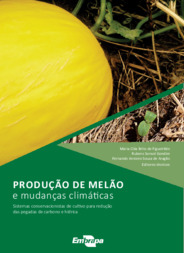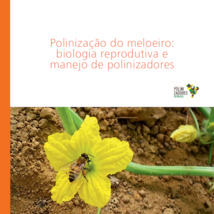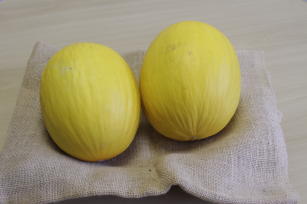Bees choose melon flowers through scent
Bees choose melon flowers through scent
| Highlights:
|
Farmers had already observed that melon flowers are less attractive for the bees when compared to the ones in the vegetation that borders the plantations. Now scientists discovered that honeybees (Apis mellifera) make a distinction between the flowers of different types of melons. Moreover, they prefer not to visit the flowers of some melons, which is an issue for commercial plantations, as melon plants are highly depend on bee pollination to bear fruit.
The key for this behavior lies in the variation of volatile compounds exhaled by the flowers. Each kind of melon gives off a different bouquet, which includes attractive or repellent compounds. The presence of the volatile compound related to repellance determines the behavior of the bees, even when there are attractive compounds.
Researchers from Embrapa Tropical Agroindustry and from the Federal University of Ceará (UFC) studied how bees behaved in the flowers of the five most cultivated types of melon in Brazil: Canary yellow, Cantaloupe, Charentais, Galia and Santa Claus. The scientists associated the visits to volatile compounds. They observed positive correlations between the number of visits and amounts of D-Limonene and Benzaldehyde, and negative correlations with α-Pinene.
“The most common volatile compound found in melon flowers is correlated with non-visits”, reports the Embrapa researcher Fernando Aragão, who works with melon breeding and has studied the crop's pollination for nine years in partnership with UFC.
The researcher Guilherme Zocolo, who worked with the identification of volatile compounds at Embrapa's Multiuser Laboratory of Chemistry of Natural Products, explains that the presence of a repellent compound in melon flowers may seem strange, but the substance protects the plants from phytophagous insects, i.e. insects that eat flowers and leaves. “It is a plant defense to push insect pests away”, he clarifies.
The experiment
In commercial plantations, a single type of melon takes up large areas, hence it is difficult to associate variations in bee behavior to different types of melon. The study set up forty plots, with eight repetitions of each type of melon, in the same area, for two consecutive years.
The researchers followed the bees' foraging. They also collected data on flower characteristics like nectar, pollen and volatile compound emissions. All information was crossed to observe the factors that influenced visitation, and they evaluated the effect on production and fruit quality.
Professor Breno Freitas, coordinator of UFC's Bee Research Group, reports that during the studies, the researchers observed that cantaloups, which were significantly more visited than the others, presented only one repellent compound in small amounts, α-Pinene, and several attractive compounds. canary yellow melons have some attractive compounds, but in lower amounts than cantaloupes, and emanate only one repellent, but in larger amounts. “Charentais have attractants in small amounts and some repellants in large amounts. This explains why the bee visits the flowers of this type of melon less.”
Bee is responsible for 80% of production
“We demonstrated the need to adjust pollination management to each kind of melon”, Freitas concludes. For the professor, the study is important because pollination with Apis mellifera is responsible for 80% of all melon production. “Melon growers use bee colonies in the area because without them, they would not be able to even cover production costs”, he states.
In addition to informing bee management for crop pollination, the study findings will be useful for melon breeding programs. “With breeding and genetic improvement, it will be possible to increase the concentration of the components that attract bees so that they visit the melon flowers more often”, Aragão asserts.
The idea, according to him, is to start to identify the genotypes that offer greater concentration of the most attractive components or lower concentration of repellent or less attractive compounds. “Through molecular biology, with markers, we will be able to identify genes that are associated with the production of interesting compounds and start to work towards setting those genes in the new populations”, he adds.
Aragão stresses that most currently cultivated crops are the product of plant breeding programs conducted to select desired characteristics, but, generally speaking, they were not concerned with floral characteristics related to pollinator attraction. Based on the study results, another possibility is to produce a commercial formula using molecules involved in bee attraction to aid the polination process.
Freitas stresses that improved pollination efficiency is a way to increase the agricultural productivity, that is, to increase yield in already cultivated areas without the need to expand the crop into new areas. “It is one in the ways to meet the demands of an increase in population and the need for food production with lower environmental impact”, he declares.
Click here to download the paper based on the research published on the Journal of Agricultural Science.
Translation: Mariana Medeiros
Verônica Freire (MTb 01125/CE)
Embrapa Tropical Agroindustry
Press inquiries
agroindustria-tropical.imprensa@embrapa.br
Phone number: +55 85 3391- 7116
Further information on the topic
Citizen Attention Service (SAC)
www.embrapa.br/contact-us/sac/






